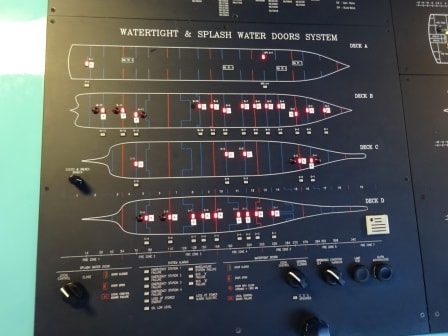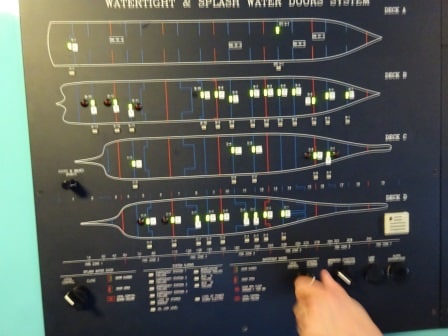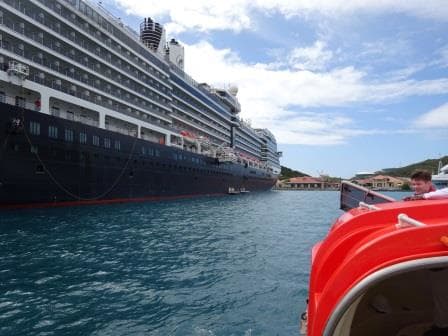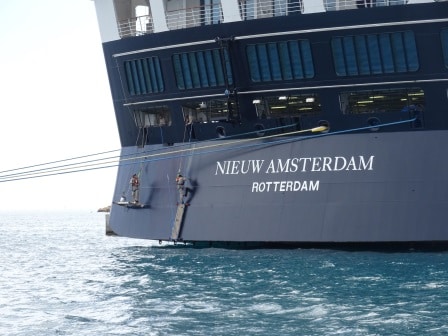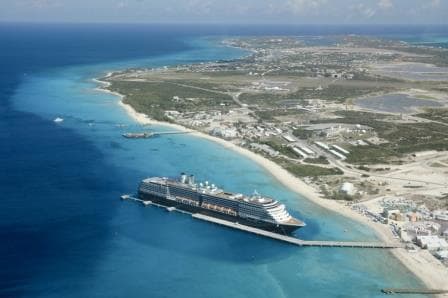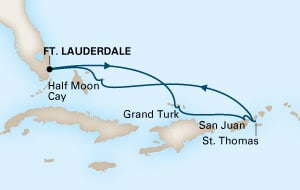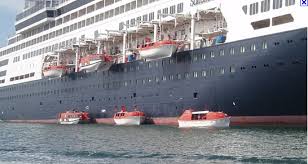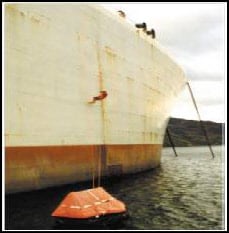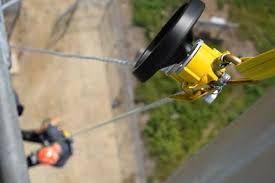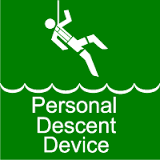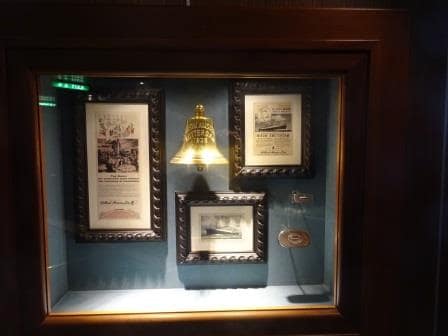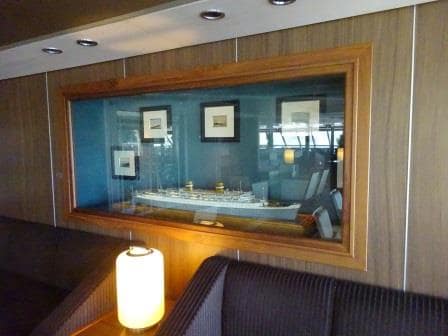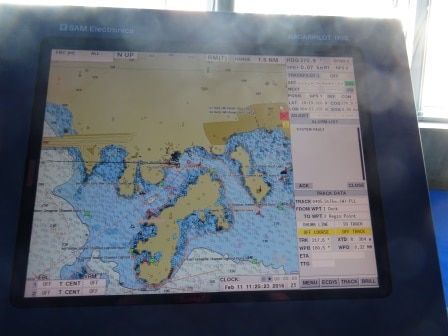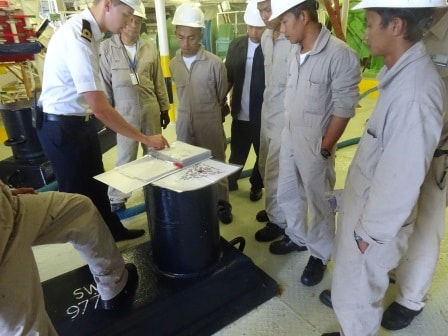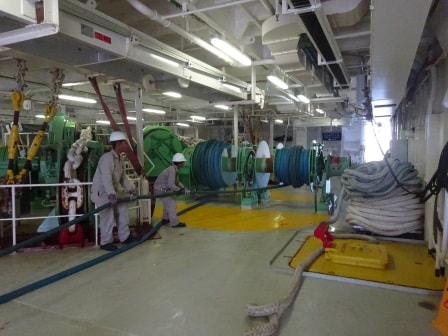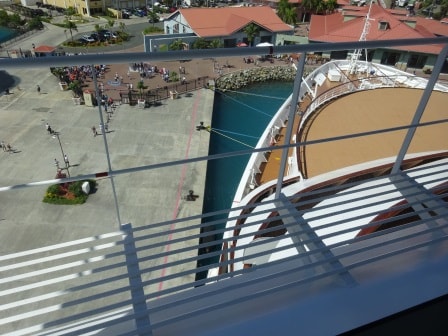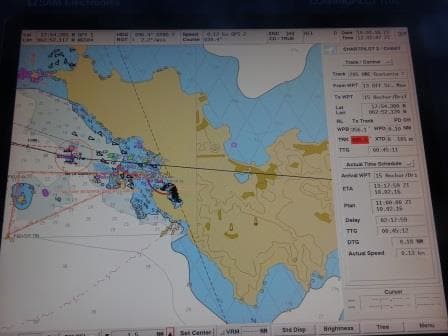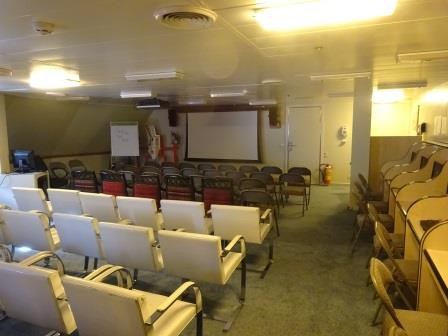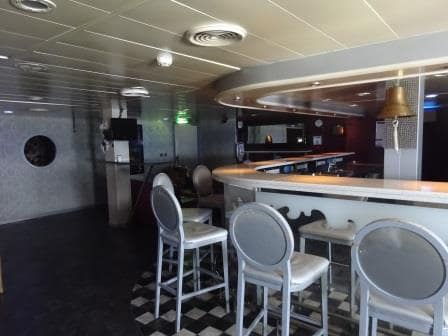Today we covered most of the distance from St. Thomas back to the Bahamas by sailing in the North Atlantic Ocean. It is a bit windy, which creates waves and those waves make the ship wobble on occasion. But not very much, just enough to remind you that it is a ship you are travelling on. For the guests this is the final day to enjoy “full shipboard life” with everything in full swing as tomorrow we are in Half Moon Cay and most of the last evening will be given up to packing. As the sun is shining nicely, the outside decks are full with sun worshippers.
What is something new to Holland America; and the Nieuw Amsterdam is the first ship where it has been installed, is TV on demand. What we are used to in the airline industry already for a while. You switch on your TV and you have 20 or 30 movies and TV programs to choose from; and start and stop whenever you want. Thus far on our ships you had to check the program and then catch the movie at the right time if you wanted to see it from start to finish. This upgrade will be rolled out over the fleet in due course. What is interesting is that I hear more TV’s going in the cabins than before. I spoke to a gentleman who was very happy as he could now catch up with the latest movies as his wife did not want to go to the cinema at home anymore and this was a good alternative for him. We used to alleviate the movie issue with the option of offering free –rental DVD’s to our guests to watch whatever they wanted but this of course works much better.
In the meantime my school class was hard at work and is starting to make themselves useful for the ship as well. Today it was watertight door testing with Central Closure. Watertight doors are the most important defense we have against sinking. By sealing off the “holes” – passageways in the bulkheads, they ensure that water cannot flow through the ship but stays in one compartment. As long as no more than the two biggest compartments are flooded, the ship will stay afloat. For everybody to do their work on the lower decks, we need those “holes” open most of the time. Thus there is the need for testing to ensure the doors still work. Every sea day there is a sort of test going on, to ensure good and correct operation. If ashore you might ask if “everyday” is needed; but for a ship it is. Basically a ship is exposed continuously to small earthquakes due to the movement while at sea and that has its influence on all the equipment. Much more so than on land. And thus we test.
We do the test by closing and opening locally on normal power. We do it locally with the hand pump. We do it local/remote = which means from an operating station above the “watertight deck” which is the highest deck under which watertight doors are installed and we do it with a General Closure from the bridge. (And if everything would fail, each door has a pressure bottle which ensures it open and closes 3 more times without any power at all)
For a General Closure in an emergency, the officer in charge will only have to walk a few steps and push or turn one button and all the doors close. Checking this takes a lot of man power as we need guards near every door to prevent accidents. All crew are trained not to go through a open door when the bells are ringing but we are all human and sometimes in a big hurry. Accidents with Watertight Doors still happen in the industry and fatalities with these doors still occur as well. Even in the year 2016.
Thus the team was strategically parked in the various areas to control any straying crew and to see if the doors really closed. WTD’s normally close within 30 seconds after the alarm but some of them have to be opened up first as they are always kept closed and thus the whole operation takes at least half an hour to accomplish to ensure a successful test. And thus we saved the other officers valuable time and learned another routine at the same time.
Tomorrow we are at Half Moon Cay. The ship will make its final approach at 07.30 to be in position for the tender service by 07.45 hrs. We are expecting an overcast day with temperatures of around 73oF / 23oC and a strong breeze from the North East.
